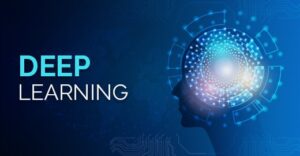Introduction
In the realm of artificial intelligence and machine learning, deep learning stands out as a powerful paradigm that has revolutionized various fields, from image recognition to natural language processing. While its prowess in classification tasks is widely recognized, its potential in regression analysis often takes a back seat. However, the capabilities of deep learning extend far beyond classification, offering a robust framework for regression tasks as well.
Understanding Regression Analysis:
Before delving into the intricacies of deep learning for regression, let’s first understand what regression analysis entails. Regression analysis is a statistical technique used to model the relationship between a dependent variable and one or more independent variables. The goal is to understand how the independent variables impact the dependent variable and to predict the values of the dependent variable based on the values of the independent variables.
Traditional regression techniques, such as linear regression, polynomial regression, and logistic regression, rely on predefined functional forms and assumptions about the data distribution. While effective in many scenarios, these methods may struggle with complex, nonlinear relationships and high-dimensional data.
Deep Learning for Regression:
Deep learning offers an alternative approach to regression analysis, leveraging neural networks with multiple hidden layers to automatically learn intricate patterns and representations from the data. Unlike traditional regression techniques, deep learning models can capture complex, nonlinear relationships without relying on explicit mathematical formulations.
Here’s how deep learning can be used for regression:
- Neural Network Architectures: Deep learning models for regression typically involve feedforward neural networks or more advanced architectures like convolutional neural networks (CNNs) and recurrent neural networks (RNNs). These architectures can accommodate various types of input data, including structured, unstructured, and sequential data.
- Loss Functions: In regression tasks, the choice of loss function is crucial for training the model effectively. Common loss functions used in deep learning for regression include mean squared error (MSE), mean absolute error (MAE), Huber loss, and quantile loss, among others. The selection of the loss function depends on the specific characteristics of the data and the desired behavior of the model.
- Feature Engineering: Deep learning models have the capability to automatically learn relevant features from the raw data, reducing the need for manual feature engineering. However, preprocessing steps such as normalization, scaling, and encoding categorical variables may still be necessary to ensure optimal performance.

Applications of Deep Learning Regression:
The versatility of deep learning makes it applicable to a wide range of regression tasks across various domains. Here are some notable applications:
- Financial Forecasting: Deep learning models can analyze historical financial data to predict stock prices, market trends, and economic indicators. These predictions are valuable for investment decisions, risk management, and portfolio optimization.
- Healthcare Analytics: In healthcare, deep learning regression models can be used for predicting patient outcomes, disease progression, and treatment responses based on medical imaging, electronic health records (EHRs), and genomic data.
- Energy Consumption Prediction: Deep learning regression techniques can forecast energy consumption patterns, optimize energy usage, and improve the efficiency of energy systems in industrial, commercial, and residential settings.
- Demand Forecasting: Retailers and e-commerce companies leverage deep learning regression models to predict customer demand for products, optimize inventory management, and enhance supply chain logistics.
Challenges and Limitations:
Despite its promise, deep learning for regression is not without challenges and limitations. Some of the key challenges include:
- Data Quantity and Quality: Deep learning models require large volumes of high-quality labeled data for training. In many regression tasks, acquiring sufficient labeled data can be costly, time-consuming, or impractical.
- Interpretability: Deep learning models are often regarded as “black boxes” due to their complex architectures and nonlinear transformations. Understanding the underlying factors driving the model predictions can be challenging, especially in regulated domains like healthcare and finance.
- Overfitting: Deep learning models are prone to overfitting, especially when the training data is limited or noisy. Regularization techniques, data augmentation, and dropout layers are commonly employed to mitigate overfitting.
Future Directions:
Despite the challenges, the field of deep learning for regression continues to evolve rapidly, driven by advances in hardware, algorithms, and data availability. Some promising directions for future research and development include:
- Transfer Learning: Transfer learning techniques, where pre-trained deep learning models are fine-tuned on specific regression tasks, can help mitigate the data scarcity problem and accelerate model development.
- Explainable AI: Research into explainable AI aims to enhance the transparency and interpretability of deep learning models, enabling stakeholders to understand and trust the model predictions.
- Bayesian Deep Learning: Bayesian deep learning methods integrate probabilistic frameworks with deep neural networks, enabling uncertainty quantification and robustness to noisy or incomplete data.
Conclusion
Deep learning holds tremendous potential for regression analysis, offering a flexible and powerful framework for modeling complex relationships in data. By leveraging deep neural networks, researchers and practitioners can tackle a diverse array of regression tasks across industries, from finance and healthcare to energy and retail. While challenges remain, ongoing research and innovation are poised to further enhance the efficacy and applicability of deep learning for regression in the years to come. As we continue to unlock the mysteries of deep learning, the possibilities for regression analysis are boundless, paving the way for transformative advancements in predictive modeling and data-driven decision-making.
If you’re interested in staying updated with the latest insights and trends in artificial intelligence, deep learning, and data science, I invite you to connect with me on LinkedIn. Let’s continue the conversation and explore the exciting opportunities in these cutting-edge fields together!
